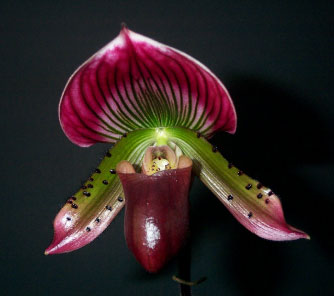Oncidium
Oncidium
From Wikipedia, the free encyclopedia
| Oncidium | |||||||||
|---|---|---|---|---|---|---|---|---|---|
Oncidium incurvum | |||||||||
| | |||||||||
| Species | |||||||||
| See text. | |||||||||
| Synonyms | |||||||||
|
Oncidium, abbreviated as Onc in horticultural trade, is a genus that contains about 330 species of orchids from the subfamily Epidendroideae of the orchid family (Orchidaceae). This is a complex, difficult genus, with many species being reclassified. Calls are made for splitting this genus into multiple genera.
Contents[hide] |
[edit] Description
This genus was first described by Olof Swartz in 1800 with the orchid Oncidium altissimum, which has become the type species. Its name is derived from the Greek word "onkos", meaning "swelling". This refers to the callus at the lower lip.
Most species in the Oncidium genus are epiphytes, although some are lithophytes or terrestrials. They are widespread from northern Mexico, the Caribbean, some parts of South Florida to South-America. They usually occur in seasonally dry areas.
They can be divided in three categories, according to their growth pattern :
- Some have green pseudobulbs and long racemes with small flowers and a dominant lip. They are mostly golden yellow with or without reddish-brown barring, but some are brown or yellowish-brown. Other Oncidium species have white and pink blooms, while some even have startling, deep red colors in their flowers.
- Another group has extremely small pseudobulbs and stiff, erect, solitary leaves. These cylindrical leaves act as a water reserve. They have long racemes with yellow flowers that seem to fan out at the top. Sizes of these orchids can vary from miniature plants of a couple of centimetres to giants with 30 cm-long leaves and racemes of more than one metre long. These species, known as the Mule-Ears, are now classed as Psychopsis.
- Formerly there was a third group, called the Variegata or equitant oncidiums. They have no pseudobulbs, giving fan-shaped shoots of less than 15 cm, with triangular section leaves. These oval, broad and spongy leaves act as storage organs. Their flowers are most complicated with exquisite colors. The sepals are somewhat fleshy. The petals and the lip are membranaceous. These orchids are now classified as Tolumnia. Cyrtochilum is another genus that many Oncidium species have recently been reclassified into; Cyrtochilum species have extremely long, winding inflorescences that can sometimes reach 20' or more, curled petals that result in three-pointed blooms, and rambling growth habits in which each new pseudobulb appears on top of the old one.
Oncidium species are characterised by the following properties :
- presence of column wings
- presence of a complicated callus on the lip (this can be used to separate the taxa).
- pseudobulbs with one to three leaves.
- several basal bracts at the base of the pseudobulbs.
The flowers of the Oncidium genus come in shades of yellow, red, white and pink. The petals are often ruffled on the edges, as is the lip. The lip is enormous, partially blocking the small petals and sepals.
Some Oncidium orchids are very long : Oncidum altissimum and Oncidium baueri can grow to a height of 5 m, while Oncidum sarcodes can reach 3 m.
They are known as 'spray orchids' among some florists. They are very varied and are easily hybridised with Odontoglossum. Together with other closely related genera (Cochlioda, Miltonia, Cuitlauzina, Miltoniopsis, Osmoglossum, Leochilus, Comparettia, Cyrtochilum, Odontoglossum, Tolumnia, Rhynchostele [formerly Lemboglossum], Psychopsis, etc.) they form the Oncidium alliance. Some of the best Oncidium alliance hybrids originate from Oncidium tigrinum and Oncidium incurvum, when crossed with Odontoglossums, although hybridization possibilities of this group of orchids are literally endless, and there are literally hundreds of thousands of excellent hybrids in the Oncidium alliance.





Đăng nhận xét